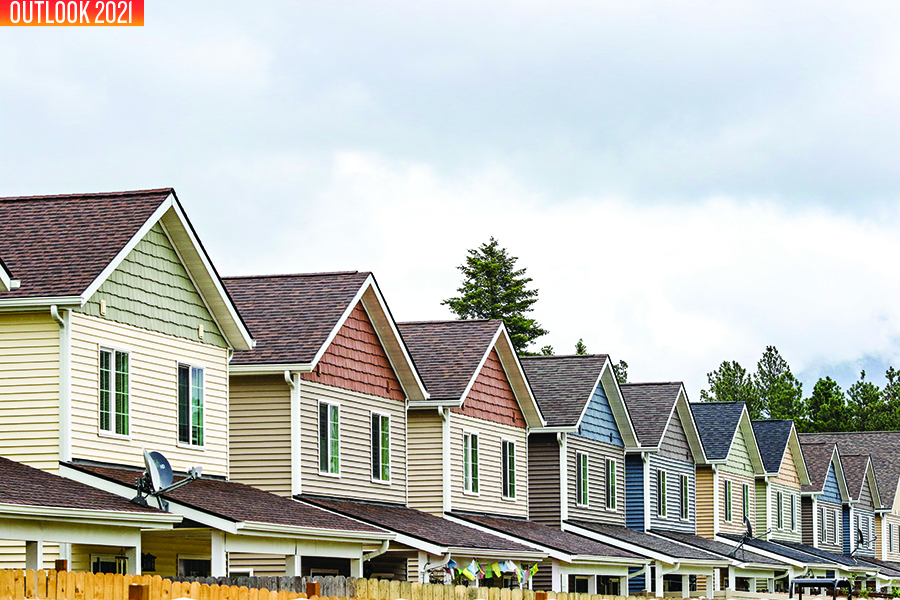After a slew of homebuyers flooded the Flathead Valley this summer, buying homes sight unseen, realtors are taking a breather as the busy season winds down while bracing for the next round in 2021.
“I predict it’s going to be the same as 2020,” Northwest Montana Association of Realtors (NMAR) Association Executive Officer Jeri Moon said.
While dollar volume of closed sales in Flathead County peaked at the end of September, a typical trend during normal years, realtors expect the market to pick back up at the end of January or February in 2021. Closed sales hovered at $220 million this September compared to $109 million at the same time last year, according to Montana Regional MLS data.
The high volume of home sales has lowered housing inventory in the Flathead. At the end of December, there were 299 single-family homes for sale in Flathead County compared to 597 single-family homes in 2019, Moon said.
The low inventory has also likely increased the popularity of homes in the $275,000 to $455,000 range, Moon said.
The county’s low inventory rate reflects a nationwide trend, which saw an all-time low inventory in October 2020, according to the National Association of Realtors’ (NAR) 2020 Real Estate Forecast Summit data.
“National data says inventory is at an all-time low and new home sales are up,” NMAR Public Affairs Director Erica Wirtala said.
Moon says Whitefish, Kalispell and Columbia Falls all have 50% less inventory than in 2019, while Bigfork has 30% less inventory.
As new residents move to the county, median home prices are continuing to rise, particularly in smaller towns. To realtors’ surprise, Columbia Falls’ median home price is currently $400,000, while Kalispell’s sits at $389,000.
“That’s remarkable,” Wirtala. “It’s hopping in little towns. I think there are a lot of younger buyers moving in that direction … It used to be kind of an affordable place to live but now it’s a hot place to live.”
While realtors point to remote work as one reason out-of-state buyers are leaving big cities, national real estate forecasters predict that trend will fizzle in the next few years. In 2020, 21% of workers worked from home, but that percentage is expected to drop to 18% in 2021 and 12% in 2022. Only 6% of workers worked from home in 2019.
While realtors saw anecdotal evidence of out-of-state residents moving to the Flathead Valley this year, Wirtala says more precise figures will be difficult to quantify until 2020 U.S. Census data is released.
“We’re just as perplexed as everybody else about numbers,” Wirtala said.
According to the NAR forecast, cities like Phoenix, Denver, Salt Lake City and Boise will be the top prospective markets in 2021.
“Montana didn’t even make the list,” Wirtala said. “Twenty-three million Americans are migrating around us right now and people are moving for a variety of reasons. We’re seeing an exit out of urban areas and into rural small towns. People always think there are a lot of people moving into Montana, but there’s also a lot of people moving out.”
Wirtala suspects that issues like lack of broadband internet, a two-and-a-half hour drive to the interstate and limited direct flights still deters people from moving to the area.
But despite Montana’s infrastructure obstacles, realtors don’t think 2020’s homebuying trends will change much until the pandemic winds down.
“I don’t think we’ll see anything different with COVID until maybe March or April,” Moon said. “I think that still keeps people thinking about their future, their life and how they want to live and work.”
